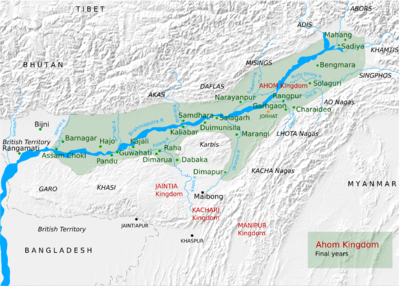The empire strikes back---
Mughal emperor Aurangzeb was informed of the losses on December 19, 1667 and he commissioned Raja Ram Singh of Amber, son of the famous Mirza Raja Jai Singh, to take back Guwahati.
Ram Singh
Aurangzeb
The muster of Aurangzeb
Ram Singh left Delhi on December 27, 1667, and finally reached Rangamati in February in 1669. He was accompanied,by the Mughal general Rashid Khan, ex-faujdar of Guwahati. The Ahoms, anticipating a Mughal strike, is said to have followed his movements from Delhi itself.
Along the way Aurangzeb augmented
Ram Singh's forces of 4,000 troopers (from his char-hazaari mansab), 1,500 ahadis and 500 barqandezes by an additional 30,000 infantrymen, 21 Rajput chiefs (Thakurs) with their contingents, 18,000 cavalry, 2,000 archers and shieldmen and 40 ships.
Armies from Koch Bihar joined the Mughal forces since they were vassals.Portuguese and other European sailors were employed, to man the fleet. These forces moved up the Brahmaputra from Dhaka to Guwahati.
Lachit's spies kept him informed of the progress of Ram Singh's advance. When Lachit surveyed the massive Mughal force later, he was moved to tears and he uttered: "It is a tragedy that my country is facing this dire catastrophe during my Phukanship. How will my king be saved? How will my people be saved? And how will my posterity be saved?"
Ahom war strategy
With the impregnable defences that he had prepared at Guwahati, he was confident to beat back the Mughal attack. He realized that he stood no chance in open ground on the plains against the immensely superior Mughal cavalry of Turkish and Arab horse. His small ponies were no match for them. The Mughals had to be denied any opportunity to exploit their overwhelming superiority in cavalry.
The Mughals made contact with Lachit's defences in March 1669 and laid siege to Guwahati.
The empire had struck back!.....













